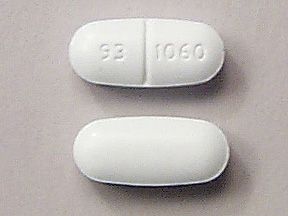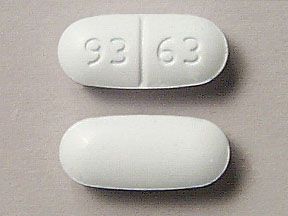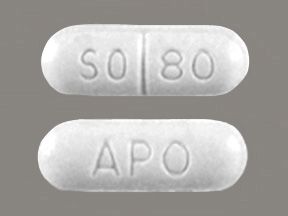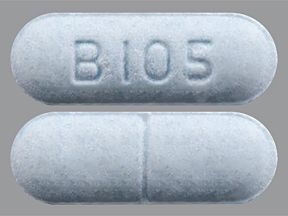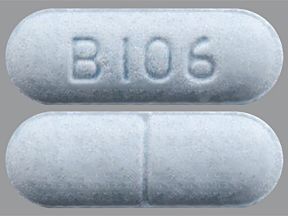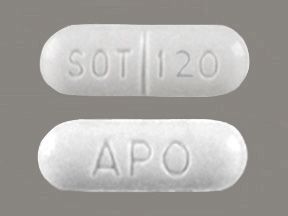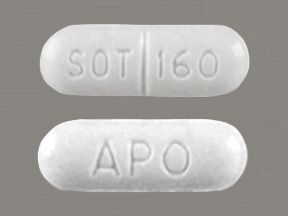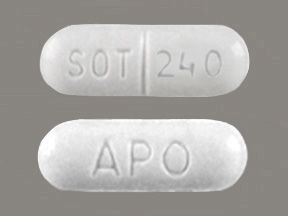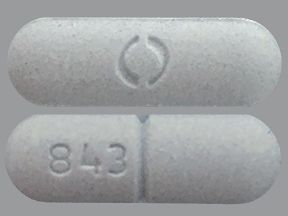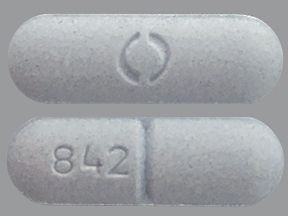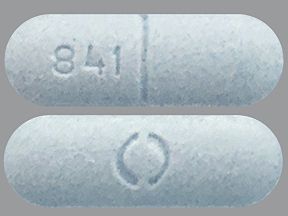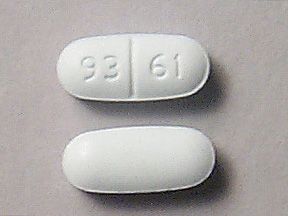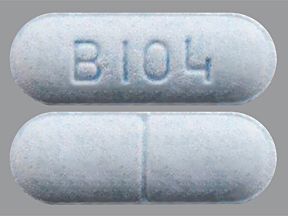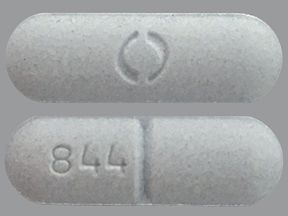This drug has boxed warnings. A boxed warning is the most serious warning from the Food and Drug Administration (FDA). It alerts doctors and patients about drug effects that may be dangerous.
- Administration warning: If you start or restart this medication, you should be in a facility that can provide continuous heart monitoring and kidney function tests for at least 3 days. This will help to minimize the risk of heart rhythm problems.
- Sotalol is available as both a generic and brand-name drug. Brand names: Betapace and Sorine. Sotalol AF is available as both a generic and brand-name drug. Brand name: Betapace AF.
- Sotalol is an antiarrhythmic drug used to treat ventricular arrhythmia. Sotalol AF is used to treat atrial fibrillation or heart flutter.
- Sotalol and sotalol AF can’t be substituted for one another. They have differences in dosing, administration, and safety. Make sure you know which sotalol product you’re taking.
- The start of your treatment with this drug, as well as any dosage increases, will take place in a setting where your heart rhythm can be monitored.
Sotalol is a prescription drug. It’s available as an oral tablet and an intravenous solution.
Sotalol is available as the brand-name drugs Betapace and Sorine. Sotalol AF is available as the brand-name drug Betapace AF.
Sotalol and Sotalol AF are also available in generic versions. Generic drugs usually cost less. In some cases, they may not be available in every strength or form as the brand-name version.
If you’re taking sotalol AF to treat irregular heartbeat, you’ll take it along with a blood-thinning medication.
Why it’s used
Sotalol is a beta-blocker. It’s used to treat:
- ventricular arrhythmia (sotalol)
- atrial fibrillation and atrial flutter (sotalol AF)
How it works
Sotalol belongs to a class of drugs called antiarrhythmics. It works by reducing abnormal heart rhythms. It also helps blood vessels to relax, which may help your heart work better.
Solatol can cause mild or serious side effects. The following list contains some of the key side effects that may occur while taking Solatol. This list doesn’t include all possible side effects.
For more information on the possible side effects of Solatol, or tips on how to deal with a troubling side effect, talk with your doctor or pharmacist.
More common side effects
The more common side effects that can occur with sotalol include:
- low heart rate
- shortness of breath
- tiredness
- nausea
- dizziness or lightheadedness
- weakness
If these effects are mild, they may go away within a few days or a couple of weeks. If they’re more severe or don’t go away, talk to your doctor or pharmacist.
Serious side effects
Call your doctor right away if you have serious side effects. Call 911 if your symptoms feel life threatening or if you think you’re having a medical emergency. Serious side effects and their symptoms can include the following:
- heart problems, including:
- chest pain
- irregular heartbeat (torsades de pointes)
- slow heart rate
- gastrointestinal problems, including:
- vomiting
- diarrhea
- allergic reactions, including:
- wheezing or trouble breathing
- skin rash
- cold, tingling, or numbness in your hands or feet
- confusion
- muscle aches and pains
- sweating
- swollen legs or ankles
- tremor or shakes
- unusual thirst or loss of appetite
The solatol dosage your doctor prescribes will depend on several factors. These include:
- the type and severity of the condition you’re using solatol to treat
- your age
- the form of solatol you take
- other medical conditions you may have
Typically, your doctor will start you on a low dosage and adjust it over time to reach the dosage that’s right for you. They’ll ultimately prescribe the smallest dosage that provides the desired effect.
The following information describes dosages that are commonly used or recommended. However, be sure to take the dosage your doctor prescribes for you.
Your doctor will determine the best dosage to suit your needs.
Dosage for ventricular arrhythmia
Generic: sotalol
- Form: oral tablet
- Strengths: 80 milligrams (mg), 120 mg, and 160 mg
Adult dosage (ages 18 years and older)
- The recommended starting dose is 80 mg taken two times per day.
- Your dose can be gradually increased. Three days are needed between dosage changes in order to monitor your heart and for enough drug to be in your body to treat the arrhythmia.
- Your total daily dose can be increased to 240 or 320 mg per day. This would be the same as 120 to 160 mg taken two times per day.
- You might require higher doses of 480–640 mg per day if you have life threatening heart rhythm problems. This high dose should only be given when the benefit exceeds the risk of side effects.
Child dosage (ages 2–17 years)
- The dosage is based on body surface area in children.
- The recommended starting dose is 30 milligrams per square meter (mg/m2) taken three times per day (90 mg/m2 total daily dose). This is approximately equal to the 160 mg per day dose for adults.
- Your child’s dosage can be increased gradually. Three days are needed between dosage changes in order to monitor your child’s heart and for enough drug to be in your child’s body to treat the arrhythmia.
- Increasing doses is based on clinical response, heart rate, and heart rhythm.
- Your child’s dose can be increased to a maximum of 60 mg/m2 (approximately equal to the 360 mg per day dose for adults).
Child dosage (ages 0–2 years)
- Dosage for children younger than 2 years old is based on age in months. Your child’s doctor will calculate your dose.
- The total daily dose should be given three times per day.
Dosage for atrial fibrillation or atrial flutter
Generic: sotalol AF
- Form: oral tablet
- Strengths: 80 mg, 120 mg, and 160 mg
Adult dosage (ages 18 years and older):
The recommended initial dose for AFIB/AFL is 80 mg twice daily. This dose may be increased in increments of 80 mg per day every 3 days depending on kidney function.
Your doctor will determine your dose and how often you need to take this medication.
Child dosage (ages 2–17 years)
- The dosage in children is based on body surface area.
- The recommended starting dose is 30 mg/m2 taken three times per day (90 mg/m2 total daily dose). This is approximately equal to the 160 mg per day dose for adults.
- Your child’s dosage can gradually be increased.
- Three days are needed between dosage changes in order to monitor your child’s heart and for enough of the drug to be in your child’s body to treat the arrhythmia.
- Increasing doses is based on clinical response, heart rate, and heart rhythm.
- Your child’s dose can be increased to a maximum of 60 mg/m2 (approximately equal to the 360 mg per day dose for adults).
Child dosage (ages 0–2 years)
- Dosing for children younger than 2 years old is based on age in months. Your doctor will calculate your dose.
- The total daily dose should be given three times per day.
Sotalol is used for long-term treatment. It comes with risks if you don’t take it as prescribed by your doctor.
If you stop taking it suddenly
Suddenly stopping sotalol can lead to worse chest pain, heart rhythm problems, or even heart attacks. When you stop taking this medication, you’ll need to be closely monitored and consider using an alternative beta-blocker, especially if you have coronary artery disease.
If you take too much
If you think you’ve taken too much, go to an emergency room or contact a poison control center. The most common signs of overdose are lower than normal heart rate, heart failure, low blood pressure, low blood sugar, and problems breathing due to tightening of the airways in your lungs.
What to do if you miss a dose
If you miss a dose, take the next dose at the usual time. Don’t double the next dose.
How to tell if the drug is working
You may be able to tell this drug is working if your heart rate returns to normal and your heart rate is lower.
This drug comes with several warnings.
FDA warnings
- This drug has black box warnings. These are the most serious warnings from the Food and Drug Administration (FDA). A black box warning alerts doctors and patients about drug effects that may be dangerous.
- Administration warning: If you start or restart this medication, you should be in a facility that can provide continuous heart monitoring and kidney function tests for at least 3 days. This will help to minimize the risk of heart rhythm problems.
Heart rhythm warning
This medication can cause or worsen a condition called torsades de pointes. This is a dangerous abnormal heart rhythm. Get emergency medical help if you feel an irregular heartbeat while taking sotalol. You’re at increased risk if:
- your heart isn’t working well
- you have a low heart rate
- you have low potassium levels
- you’re female
- you have a history of heart failure
- you have a rapid heartbeat that lasts longer than 30 seconds
- you have poor kidney function
- you’re taking larger doses of sotalol
Kidney health warning
Sotalol is primarily removed from your body through your kidneys. If you have kidney problems, this drug may be removed too slowly, causing high levels of the drug in your body. Your dosage of this medication will need to be lowered.
Sudden drug stoppage warning
Suddenly stopping this medication can lead to worse chest pain, heart rhythm problems, or even a heart attack. You’ll need to be closely monitored when stopping this drug. Your dosage will be gradually lowered. You may receive a different beta-blocker, especially if you have coronary artery disease.
Allergy warning
Don’t take this drug again if you’ve ever had an allergic reaction to it. Taking it again could be fatal.
If you have a history of getting severe life threatening allergic reactions to a variety of allergens, you’re at a higher risk of developing the same response to beta-blockers. You may not respond to the usual dose of epinephrine that’s used to treat an allergic reaction.
Alcohol warning
Avoid alcoholic drinks while taking this drug. Combining alcohol and sotalol can make you more drowsy and dizzy. It can also lead to abnormally low blood pressure.
Warnings for people with certain health problems
For people with heart problems: Don’t take this medication if you have:
- a heart rate lower than 50 beats per minute during waking hours
- second- or third-degree heart block (unless a functioning pacemaker is in place)
- a heart rhythm disorder that can cause fast, chaotic heartbeats
- cardiogenic shock
- uncontrolled heart failure
- baseline measure in your heart’s electrical cycle (QT interval) of more than 450 milliseconds
Also keep the following in mind:
- If you have heart failure that’s being treated by digoxin or diuretics, this medication can worsen your heart failure.
- If you have an abnormal heart rhythm called torsades de pointes, sotalol can make it worse.
- If you have torsades de pointes after a recent heart attack, this drug raises your risk of death in the short term (for 14 days) or raises your risk of dying later.
- This medication can cause a low heart rate in people with heart rhythm problems due to improper electrical activity in the heart.
- If you have a heart rhythm problem called sick sinus syndrome, this drug could cause your heart rate to drop lower than normal. It could even cause your heart to stop.
For people with asthma: Don’t take sotalol. Taking this drug can make your condition worse and decrease how well your asthma medications work.
For people with low levels of electrolytes: Don’t take sotalol if you have low levels of potassium or magnesium. This drug can cause problems with your heart’s electrical cycle. It also raises your risk of a serious heart condition called torsades de pointes.
For people with airway tightening: If you have nonallergic tightening of your airways such as chronic bronchitis or emphysema, you generally shouldn’t take sotalol or other beta-blockers. If you have to use this drug, your doctor should prescribe the smallest effective dose.
For people with life threatening allergies: If you have a history of severe life threatening allergic reactions to a variety of allergens, you’re at a higher risk of developing the same response to beta-blockers. You may not respond to the usual dose of epinephrine that’s used to treat an allergic reaction.
For people with diabetes or low blood sugar: Sotalol can mask the symptoms of low blood sugar. Your diabetes medications may need to be changed.
For people with hyperactive thyroid: Sotalol can mask the symptoms of a hyperactive thyroid (hyperthyroidism). If you have hyperthyroidism and suddenly stop taking this drug, your symptoms can get worse or you may get a serious condition called thyroid storm.
For people with kidney problems: Sotalol is primarily cleared from your body through your kidneys. If you have kidney problems, the drug might build up in your body, which can lead to side effects. If you have kidney problems, your dosage of this drug will need to be lowered. If you have severe kidney problems, don’t use sotalol.
Warnings for certain groups
For pregnant women: Sotalol is a pregnancy category B drug. That means two things:
- Studies of the drug in pregnant animals haven’t shown risk to the fetus.
- There aren’t enough studies done in pregnant women to show the drug poses a risk to the fetus.
Tell your doctor if you’re pregnant or plan to become pregnant. Sotalol should be used during pregnancy only if the potential benefit justifies the potential risk to the fetus.
For women who are breastfeeding: Sotalol may pass through breast milk and cause side effects in a child who is breastfed. Tell your doctor if you’re breastfeeding your child. You may need to decide whether to breastfeed or take sotalol.
For children: It has not been established that this drug is safe and effective for use in people younger than 18 years old.
Solatol can interact with several other medications. Different interactions can cause different effects. For instance, some can interfere with how well a drug works, while others can cause increased side effects.
Below is a list of medications that can interact with solatol. This list doesn’t contain all drugs that may interact with solatol.
Before taking solatol, be sure to tell your doctor and pharmacist about all prescription, over-the-counter, and other drugs you take. Also tell them about any vitamins, herbs, and supplements you use. Sharing this information can help you avoid potential interactions.
If you have questions about drug interactions that may affect you, ask your doctor or pharmacist.
Examples of drugs that can cause interactions with sotalol are listed below.
Multiple sclerosis drug
Taking fingolimod with sotalol can make your heart condition worse. It can also lead to a serious heart rhythm problem called torsades de pointes.
Heart drug
Taking digoxin with sotalol can decrease your heart rate. It can also cause new heart rhythm problems, or cause preexisting heart rhythm problems to occur more often.
Beta-blockers
Don’t use sotalol with another beta-blocker. Doing so can lower your heart rate and blood pressure too much. Examples of beta-blockers include:
- metoprolol
- nadolol
- atenolol
- propranolol
Anti-arrhythmics
Combining these drugs with sotalol raises your risk of heart problems. If you’re going to start taking sotalol, your doctor will carefully stop your usage of these other drugs beforehand. Examples of anti-arrhythmics include:
- amiodarone
- dofetilide
- disopyramide
- quinidine
- procainamide
- bretylium
- dronedarone
Blood pressure drug
If you take sotalol and will be stopping use of the blood pressure drug clonidine, your doctor will manage this transition carefully. This is because stopping clonidine can lead to decreased blood pressure.
If sotalol is replacing clonidine, your dosage of clonidine may be lowered slowly while your dosage of sotalol is slowly increased.
Calcium channel blockers
Taking these drugs with sotalol can increase side effects, such as blood pressure that’s lower than normal. Examples of these drugs include:
- diltiazem
- verapamil
Catecholamine-depleting drugs
If you take these drugs with sotalol, you’ll need to be closely monitored for low blood pressure and low heart rate. These symptoms can cause short-term loss of consciousness. Examples of these drugs include:
- reserpine
- guanethidine
Diabetes drugs
Sotalol can cover up the symptoms of low blood sugar, and it can cause high blood sugar. If you take sotalol with a diabetes medication that can cause a low blood sugar reaction, your dosage of the diabetes medication will need to be changed.
Examples of these medications include:
- glipizide
- glyburide
Drugs to improve breathing
Taking sotalol with certain drugs to improve your breathing can make them less effective. Examples of these drugs include:
- albuterol
- terbutaline
- isoproterenol
Certain antacids
Avoid taking sotalol within 2 hours of taking certain antacids. Taking them too close together lowers the amount of sotalol in your body and decreases its effect. These are antacids that contain aluminum hydroxide and magnesium hydroxide, such as:
- Mylanta
- Mag-Al
- Mintox
- cisapride (gastrointestinal reflux disease drug)
Mental health drugs
Combining certain mental health drugs with sotalol may make your heart condition worse or lead to a serious heart rhythm problem called torsades de pointes. Examples of these drugs include:
- thioridazine
- pimozide
- ziprasidone
- tricyclic antidepressants, such as amitriptyline, amoxapine, or clomipramine
Antibiotics
Combining certain antibiotics with sotalol can make your heart condition worse. It can also lead to a serious heart rhythm problem called torsades de pointes. Examples of these drugs include:
- oral macrolides, such as erythromycin or clarithromycin
- quinolones ,such as ofloxacin, ciprofloxacin (Cipro), or levofloxacin
Keep these considerations in mind if your doctor prescribes sotalol for you.
General
- You can take sotalol with or without food.
- You can crush or cut the tablet.
- Take this drug in evenly spaced doses.
- If you’re taking it two times per day, be sure to take it every 12 hours.
- If you’re giving this medication to a child three times a day, make sure to give it every 8 hours.
- Not every pharmacy stocks this drug. When filling your prescription, be sure to call ahead to make sure they carry it.
Storage
- Store sotalol at 77°F (25°C). You can store it for a short time in temperatures as low as 59°F (15°C) and as high as 86°F (30°C).
- Store sotalol AF at a temperature between 68°F and 77°F (20°C and 25°C).
- Keep sotalol or sotalol AF in a tightly closed, light-resistant container.
- Don’t store sotalol or sotalol AF in moist or damp areas, such as bathrooms.
Refills
A prescription for this medication is refillable. You shouldn’t need a new prescription for this medication to be refilled. Your doctor will write the number of refills authorized on your prescription.
Travel
When traveling with your medication:
- Always carry your medication with you. When flying, never put it into a checked bag. Keep it in your carry-on bag.
- Don’t worry about airport X-ray machines. They can’t hurt your medication.
- You may need to show airport staff the pharmacy label for your medication. Always carry the original prescription-labeled box with you.
Clinical monitoring
During your treatment with this drug, your doctor may monitor you. They may check your:
- kidney function
- heart function or rhythm
- blood sugar level
- blood pressure or heart rate
- electrolyte levels (potassium, magnesium)
- thyroid function
Insurance
Insurance companies may require prior authorization before they pay for the brand-name drug. The generic will probably not need a prior authorization.
There are other drugs available to treat your condition. Some may be more suitable for you than others. Talk to your doctor about possible alternatives.
Disclaimer: Healthline has made every effort to make certain that all information is factually correct, comprehensive, and up to date. However, this article should not be used as a substitute for the knowledge and expertise of a licensed healthcare professional. You should always consult your doctor or other healthcare professional before taking any medication. The drug information contained herein is subject to change and is not intended to cover all possible uses, directions, precautions, warnings, drug interactions, allergic reactions, or adverse effects. The absence of warnings or other information for a given drug does not indicate that the drug or drug combination is safe, effective, or appropriate for all patients or all specific uses.
Fact box
Sotalol may cause drowsiness. Don’t drive, use machinery, or perform any activities that require mental alertness until you know how this drug affects you.
When to call the doctor
If you will be having major surgery, tell your doctor that you’re taking this drug. You may be able to stay on the drug, but your doctor needs to know that you take it. This is because sotalol can cause severe low blood pressure and trouble restoring a normal heart rhythm.
Fact box
When you start taking sotalol and any time your dosage is increased, you’ll need to be at a healthcare facility. Your heart rhythm and heart rate will need to be monitored continuously.

